A historic burial ground with living tradition
Willesden Jewish Cemetery was created as an amenity for Victorian Jews of German and Dutch origin who settled in London. It has long been a prestigious place to be buried.
The cemetery was opened in 1873 on former sheep grazing land that was bought by the United Synagogue, a union of five Jewish congregations in the City of London. The cemetery was its first joint project.
A place of great tranquillity, the cemetery charts the development of London’s Jewish community over 150 years.
The graves and memorials are rich in social history.
The cemetery is the last resting place of Jews from all walks of life, and is still in use today, following orthodox Jewish custom. Only members of the United Synagogue can be buried here, and as space is limited, it is by prior reservation only.
The “House of Life” project supported from 2015 to 2021 by the National Lottery Heritage Fund is an investment in the future sustainability of the cemetery through greater public engagement.
The United Synagogue welcomes more visitors from all backgrounds to come and discover Jewish heritage, to learn, volunteer and contribute to the future protection of the site.
Contact
The United Synagogue Burial Society is keeper of the cemetery grounds and gardens, and offers a care service for memorials.
Cemetery Timeline
Victorian beginnings
In the mid-nineteenth century Willesden was a secluded village north-west of the capital. It rapidly expanded once the railway arrived at Willesden Junction in 1866.
Burial space for London’s 35,000 Jews was running short. As families began to move westward to suburbs like Paddington and Bayswater, the community sought land for a new cemetery on that side of the city.
Willesden Cemetery was the first joint project of the United Synagogue. This was formed by five London synagogues in 1870. Its architect and surveyor NS Joseph organised the purchase of land for Willesden Cemetery from the Church of England Commissioners.
Home Office grants licence
The Home Office granted a licence for the site to be used as consecrated burial ground for the Jews.
A public appeal provided funds to buy the land. Four community leaders, Sir Anthony de Rothschild, Edward Henry Beddington, Lionel Louis Cohen and Samuel Montagu, signed the purchase deeds for the United Synagogue. Three of these men would later be buried at Willesden.
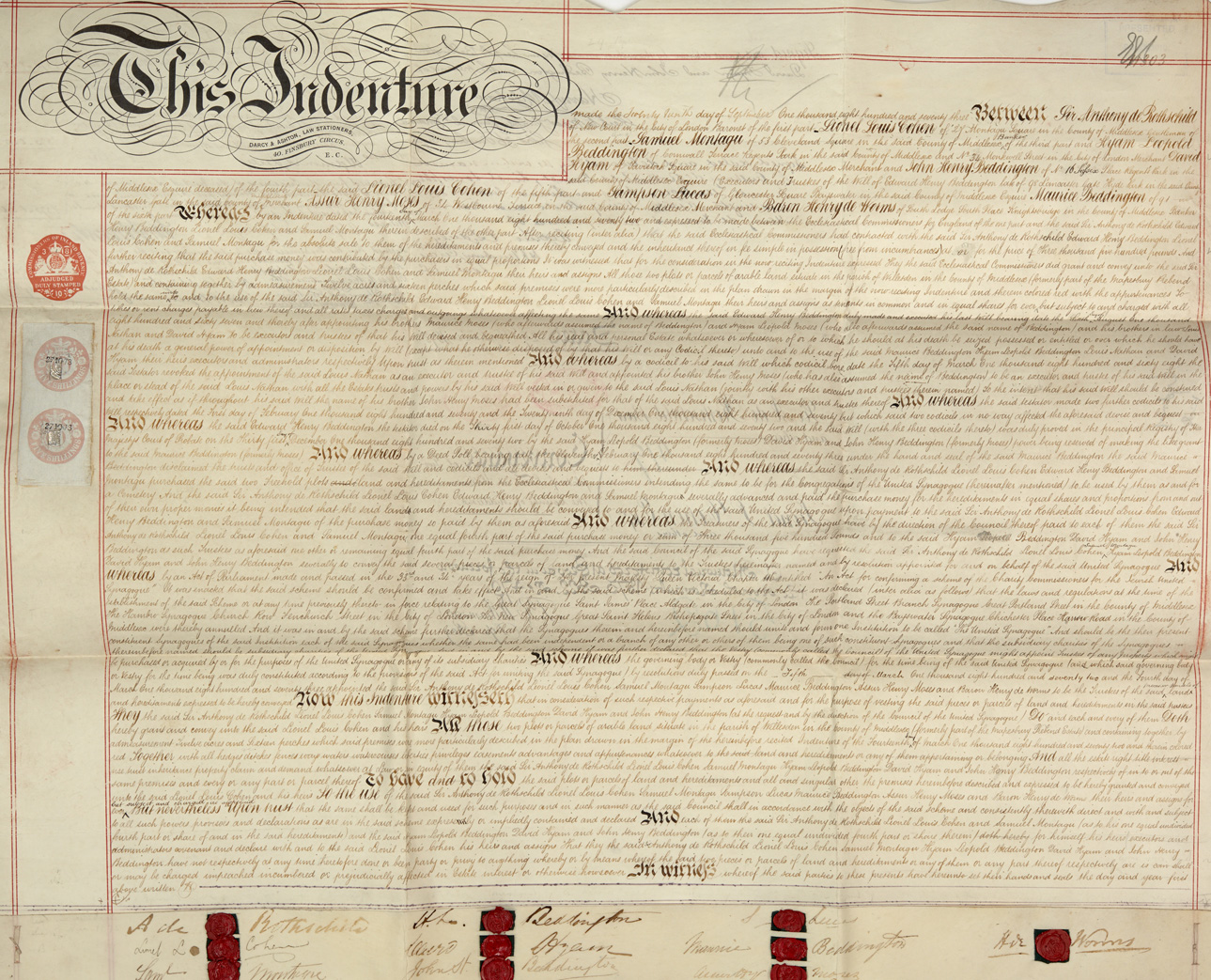
First burial
The first burial took place on 5 October 1873, before the cemetery was completed. This caused a row that was remembered for years.
The funeral took place within 24 hours of death, according to Jewish custom. But it had been hastily arranged to meet the dying wishes of a prominent person without time for the United Synagogue to advertise the full opening of the new cemetery.

Portrait of Samuel Moses, merchant of St John’s Wood and Tasmania, the first person to be buried.
Central Avenue and Mausoleum
In February 1890 the first Chief Rabbi of the United Synagogue and the British Empire died and was buried at Willesden.
The grave of Nathan Marcus Adler is in a prominent position along the central avenue.
The Earl of Rosebery commissioned a mausoleum to contain the graves of his wife Hannah and her parents Mayer Amschel and Juliana de Rothschild, after Hannah died in November 1890. The building was destroyed in World War Two.
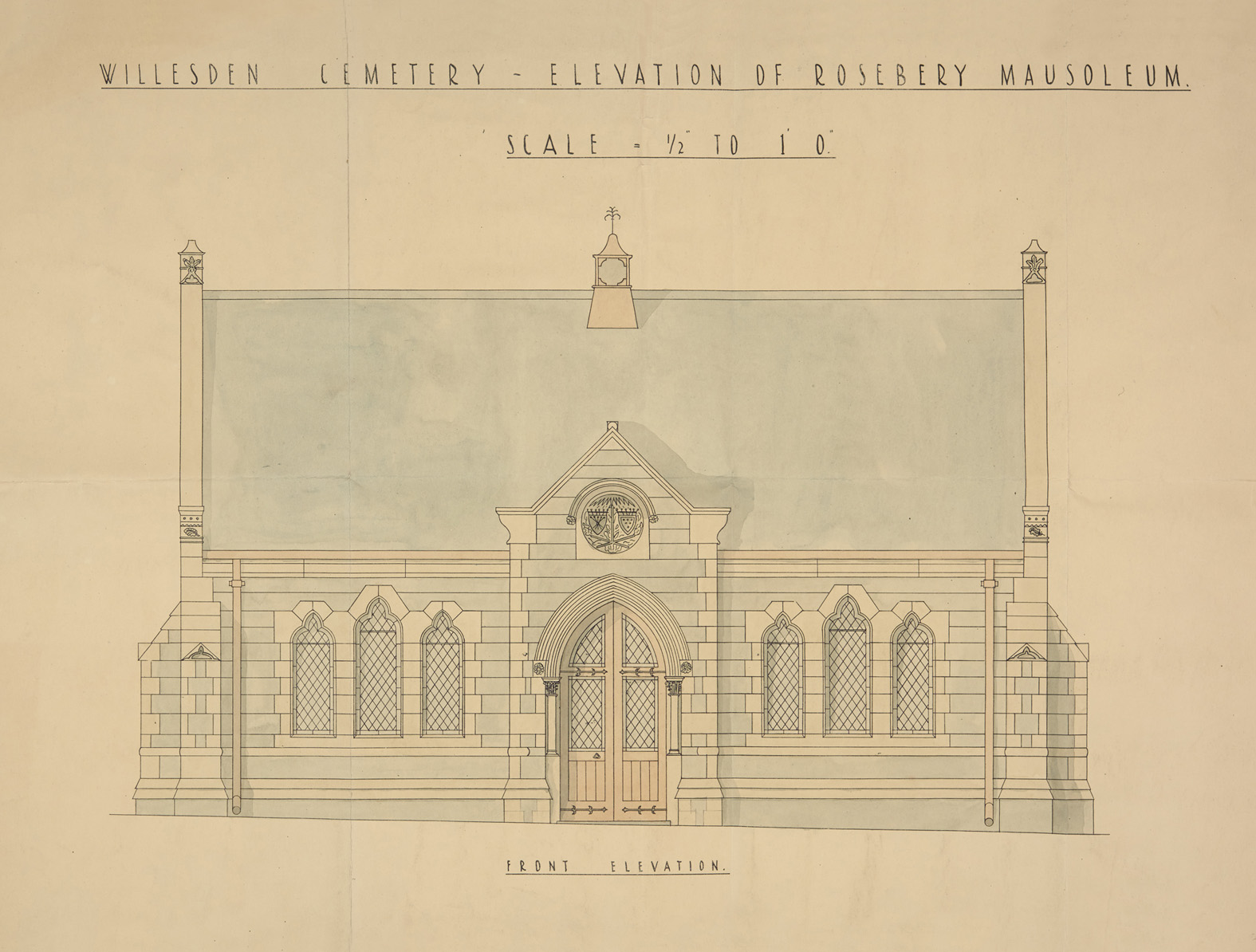
1941 drawing for the proposed reconstruction of the Rosebery Mausoleum, which was not carried out.
Expansion
Willesden initially served established Jewish families living in the City, Central and West London. Willesden itself was not a place where Jews lived. But as London’s Jewish community grew, more burial space was required.
By the end of the 1920s three extensions had been added to the cemetery.
New Ground
At the turn of the new century the Jewish population was swelled by new arrivals from Russia and Eastern Europe who settled in the East End. The “New Ground” extension was built in 1907. It gradually catered for this new wave of families as they moved out to the suburbs.
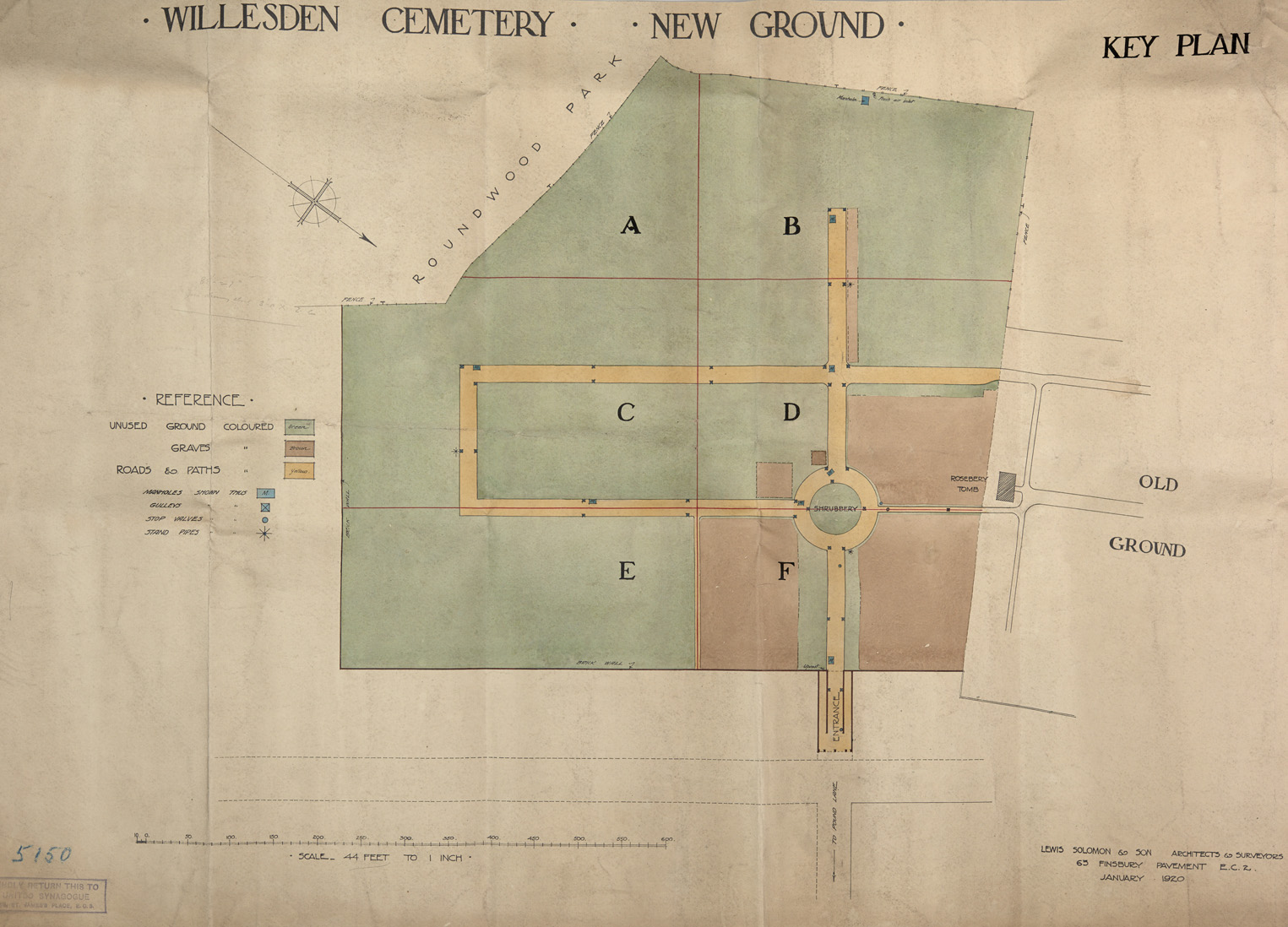
Layout for the southern extension.
New entrance
Architect Lewis Solomon designed a new entrance from Beaconsfield Road with a Queen Anne-style Lodge and new gates. Successive cemetery foremen and their families have lived in the Lodge.
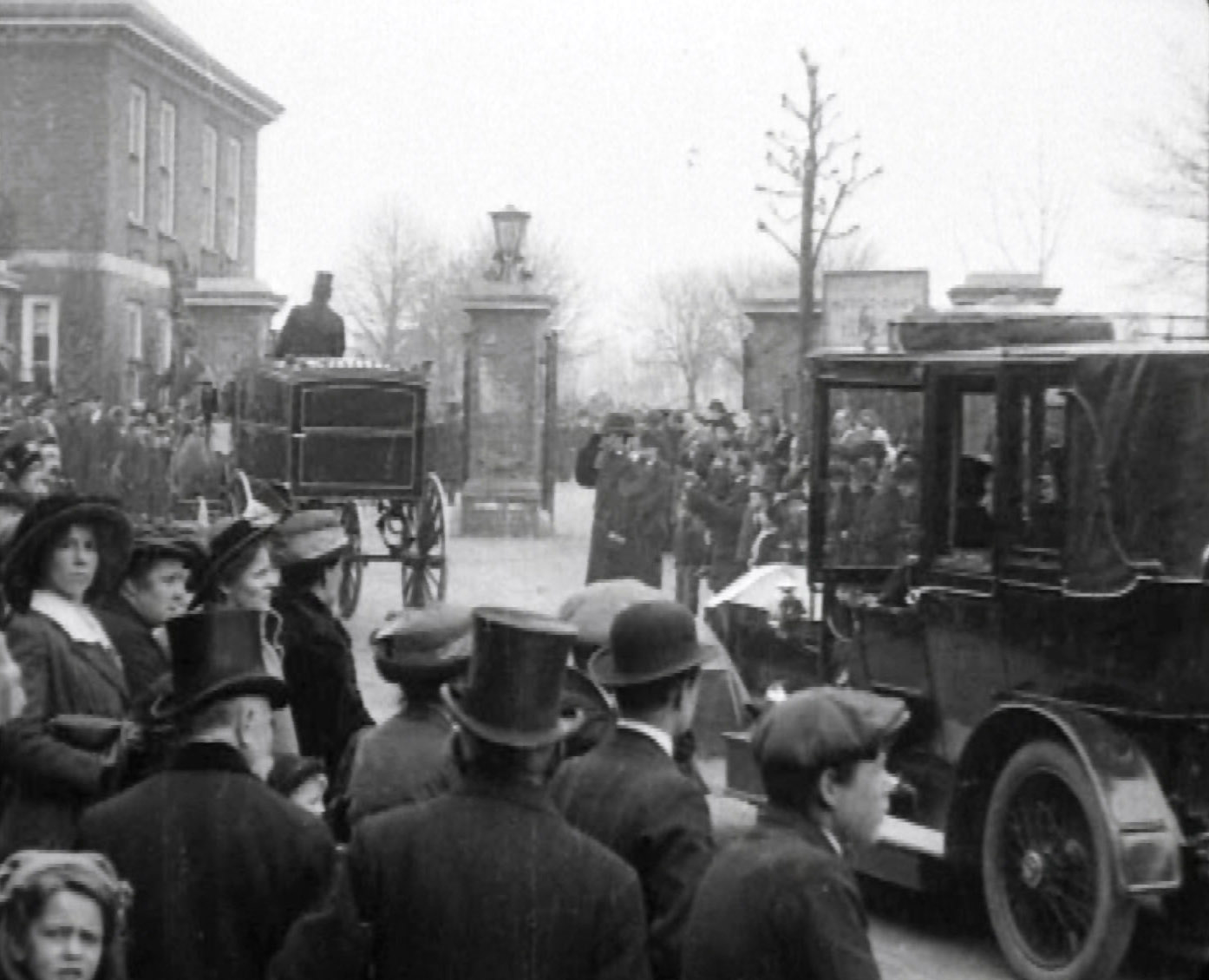
Carriage and motor cortege of Leopold de Rothschild passes through the entrance gates, May 1917
Portico
Architect Harry Ford, today better known for his designs for London tube stations, oversaw a new assembly space in front of the Prayer Hall.
Today we call it the “Portico”. A marble memorial to the fallen of the Great War was hung inside.

Harry Ford’s 1929 designs for connecting up the new Portico with the three original funerary buildings.
World War Two
The cemetery was damaged by bombing from the air in World War Two. Nearby industrial sites and railway lines were repeatedly targeted by German bombers. A direct hit on the cemetery destroyed its only mausoleum in 1941.
By 1945 the cemetery was almost full, and the United Synagogue started planning a new ground in Bushey, Hertfordshire. At Willesden, the Front Lawns were taken over for new burial space. These would be by reservation only, for people who had given the greatest service to the community.
National War Memorial
The UK’s first national Jewish War Memorial, which commemorates the Jewish servicemen and women, who died in the two World Wars, was unveiled on the Front Lawn. It was built by the Commonwealth War Graves Commission and is Grade II listed.
Displayed in the Portico are memorial boards listing names of Jewish casualties during the South African wars from 1899-1902, as well as the First World War.
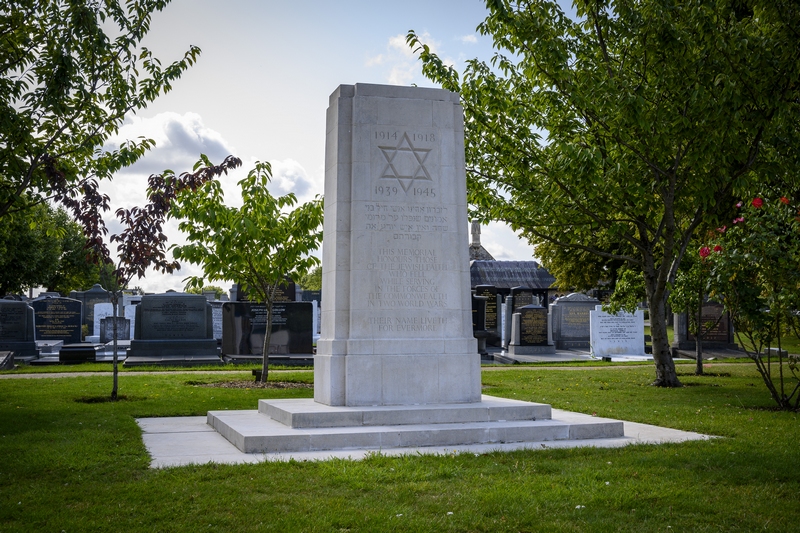
The Willesden Jewish War Memorial.
The House of Life
The National Lottery Heritage Fund awarded the United Synagogue a grant to reinvigorate the cemetery. The House of Life project began to plan the opening of the cemetery to a wider public and its conservation for the future.
The funerary buildings, war memorial and the tombs of Rosalind Franklin, Max Eberstadt, and Hannah Rosebery and her parents were listed Grade II by Historic England.
Willesden became the first Jewish cemetery on the Register of Parks and Gardens of Special Historic Interest in England.
150th Anniversary
As the United Synagogue marked its 150th Anniversary, the House of Life at Willesden Jewish Cemetery opens to the public with a new visitor experience.

